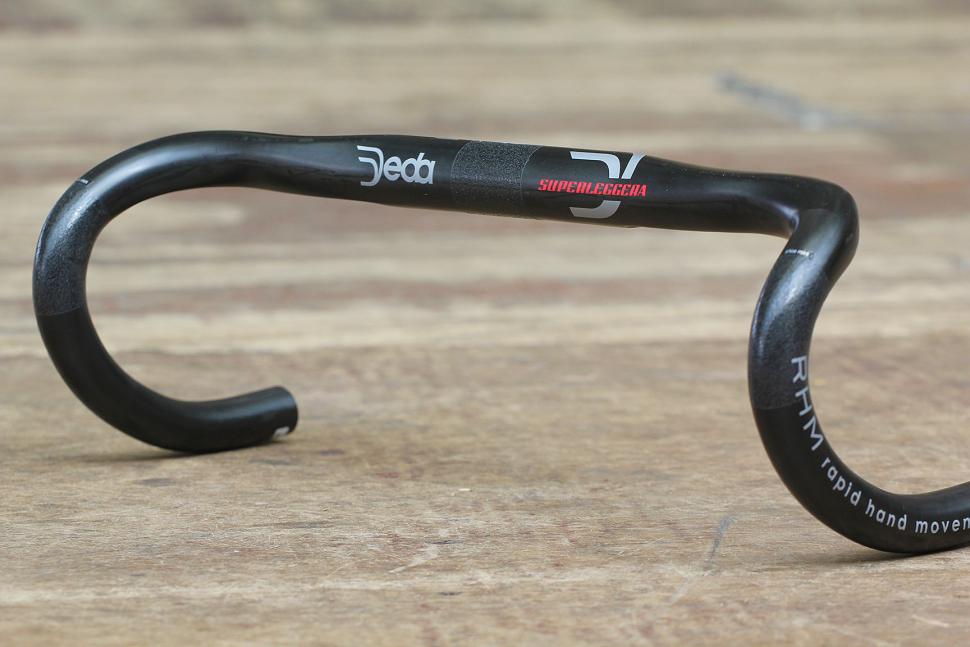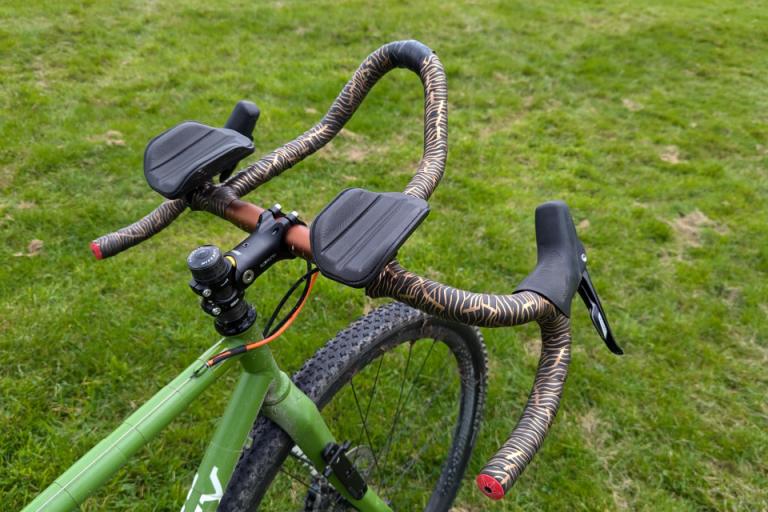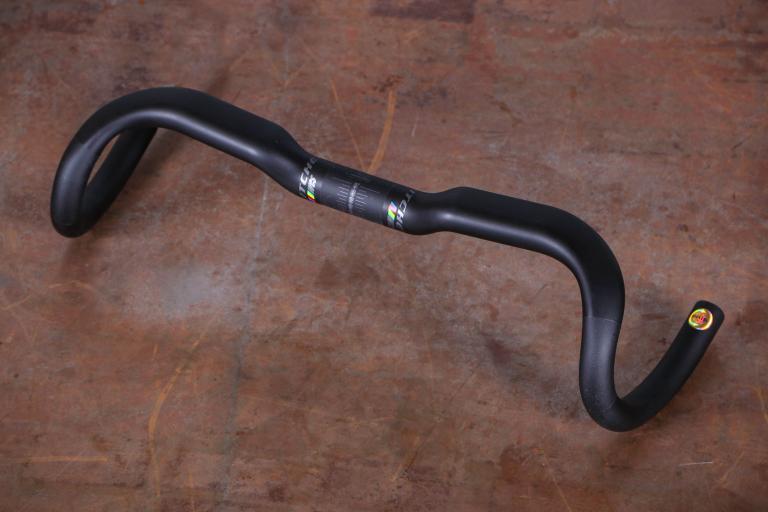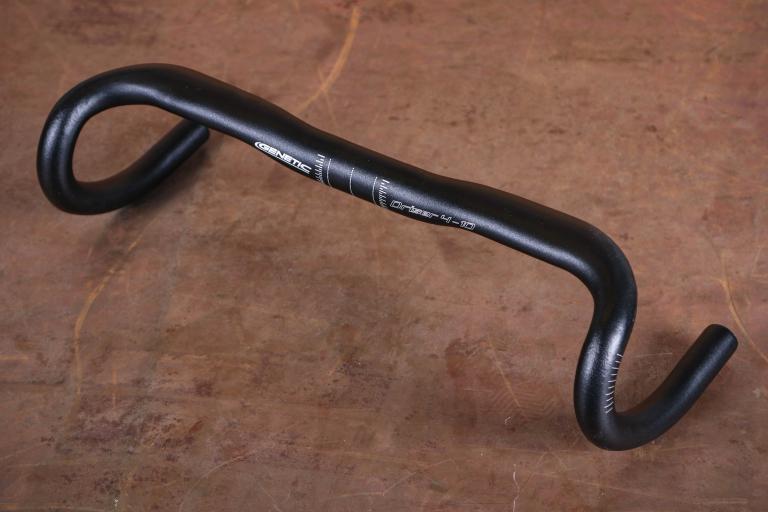- News
- Reviews
- Bikes
- Accessories
- Accessories - misc
- Computer mounts
- Bags
- Bar ends
- Bike bags & cases
- Bottle cages
- Bottles
- Cameras
- Car racks
- Child seats
- Computers
- Glasses
- GPS units
- Helmets
- Lights - front
- Lights - rear
- Lights - sets
- Locks
- Mirrors
- Mudguards
- Racks
- Pumps & CO2 inflators
- Puncture kits
- Reflectives
- Smart watches
- Stands and racks
- Trailers
- Clothing
- Components
- Bar tape & grips
- Bottom brackets
- Brake & gear cables
- Brake & STI levers
- Brake pads & spares
- Brakes
- Cassettes & freewheels
- Chains
- Chainsets & chainrings
- Derailleurs - front
- Derailleurs - rear
- Forks
- Gear levers & shifters
- Groupsets
- Handlebars & extensions
- Headsets
- Hubs
- Inner tubes
- Pedals
- Quick releases & skewers
- Saddles
- Seatposts
- Stems
- Wheels
- Tyres
- Health, fitness and nutrition
- Tools and workshop
- Miscellaneous
- Cross country mountain bikes
- Tubeless valves
- Buyers Guides
- Features
- Forum
- Recommends
- Podcast
review
 Deda Superleggera Black Bar
Deda Superleggera Black Bar£271.99
VERDICT:
Top end bar with a top end price tag and performance to match
Weight:
180g
Contact:
At road.cc every product is thoroughly tested for as long as it takes to get a proper insight into how well it works. Our reviewers are experienced cyclists that we trust to be objective. While we strive to ensure that opinions expressed are backed up by facts, reviews are by their nature an informed opinion, not a definitive verdict. We don't intentionally try to break anything (except locks) but we do try to look for weak points in any design. The overall score is not just an average of the other scores: it reflects both a product's function and value – with value determined by how a product compares with items of similar spec, quality, and price.
What the road.cc scores meanGood scores are more common than bad, because fortunately good products are more common than bad.
- Exceptional
- Excellent
- Very Good
- Good
- Quite good
- Average
- Not so good
- Poor
- Bad
- Appalling
Superleggera translates as 'super light' and at just 180g (for a 42cm wide bar) you can see why Italian company Deda Elementi have used it to name their flagship bar. It's not the lightest and definitely not the cheapest carbon handlebar we've tested but it has got a couple of aces up its sleeve.
Let's get that price out of the way right at the start, £271.99 for a carbon tube is a hell of a lot of money but if you've just spent three or four grand on a frame, another grand or so on a groupset and a couple more on wheels you're probably going to want to spec your finishing kit to match.
Deda use HR40, a high modulus carbon fibre that has a tensile strength around 400GPa making it ideal for something like a handlebar that's going to see plenty of stresses. Basically it's stiffer than standard modulus so you can use less material (for less weight) to get the same effect or use the same amount of material to create a stiffer product.
It seems Deda have gone somewhere in the middle as although it's light the Superleggers doesn't move a millimetre even under heavy sprinting. The bar is absolutely solid but thanks to carbon's shock absorbing properties never uncomfortable unless you are really on a rough stretch. Even then, it's still much less harsh than an alloy bar.
Deda have used the acronym RHM for a while now and it stands for Rapid Hand Movement. They're basically saying you can move your hands quickly to any other part of the bar while riding and while, yes you certainly can, it's no easier than any other bar on the market. I like the bar shape, though; it's compact at 75mm reach and 130mm drop and has a mix of modern and traditional styling to it. By that I mean the drops are curved throughout yet the radius of the curve changes to replicate the newer anatomic style, offering plenty of hand positions.
The ace up the Superleggera's sleeve is the cable routing. The channels passing under the bars are deep and completely swallow the cables so once taped there are no lumps or bumps at all. All the clamping areas are roughened so there is little chance of the stem or shifters slipping once tightened up to the recommended torques.
Overall the Deda Superleggera is a lovely handlebar that performs brilliantly though its stiffness will be better suited to the racers than the big mileage riders. The cost is pretty eye-watering but it's not that far away from the likes of the 3T and Bontrager bars we've recently tested and the Superleggera sits in the middle of those two on weight as well.
Deda also offer this 31.7mm diameter bar in their 35mm diameter version and a range of sizes, 42cm, 44cm and 46cm all measured outside to outside.
Verdict
Top end bar with a top end price tag and performance to match
road.cc test report
Make and model: Deda Superleggera Black Bar
Size tested: 44cm
Tell us what the product is for, and who it's aimed at. What do the manufacturers say about it? How does that compare to your own feelings about it?
The Superleggera is Deda Elementi's flagship handlebar so they've got pro performance in mind. They are certainly comfortable and stiff and wouldn't be left wanting on the most exotic of bikes.
Tell us some more about the technical aspects of the product?
Shape: RHM Rapid Hand Movement
Material: Carbon HR40
Ø Handlebar: 31,7 mm
Reach: 75 mm
Drop: 130 mm
Sizes: 42 - 44 - 46 cm outside to outside)
Weight: 180 g (42 cm)
Finish: carbon UD; polish on black (POB)
Rate the product for quality of construction:
8/10
They certainly feel well made although it's hard to tell with carbon products. They were plenty stiff enough with no creaking though.
Rate the product for performance:
8/10
In terms of stiffness and comfort the Superleggeras perform well.
Rate the product for durability:
8/10
Crash damage could be an issue compared to metal bars but they certainly don't feel fragile.
Rate the product for weight, if applicable:
8/10
Sit favourably around the other carbon bars we've tested.
Rate the product for comfort, if applicable:
7/10
A lot of shock absorbency but still on the stiff side. I wouldn't fancy doing a 200km audax on them.
Rate the product for value:
7/10
Tough one this, the more money you spend the gains get less in cycling and its no different here but if you absolutely want to shave every gram of weight off the Deda's are on par with the competition on price. Taking that into account I'd say the Deda's are worth the money in the looks, weight and performance department
Tell us how the product performed overall when used for its designed purpose
As far as handlebars go the Deda Superleggero certainly performs and you can feel the weight difference and directness in the steering once you start riding.
Tell us what you particularly liked about the product
Those deep cable grooves, very comfortable.
Tell us what you particularly disliked about the product
Can be harsh on long rides.
Did you enjoy using the product? Yes.
Would you consider buying the product? Yes.
Would you recommend the product to a friend? Yes.
Anything further to say about the product in conclusion?
A smart looking race bar with a good balance of stiffness and comfort for two to three hour rides. The price is steep but if you are considering carbon bars anyway you're already going to be expecting to pay £200 '' and as it happens, you can find this bar on line for about that.
About the tester
Age: 35 Height: 180cm Weight: 76kg
I usually ride: Whatever needs testing or Genesis Flyer, fixed of course! My best bike is: Kinesis T2 with full Centaur Red
I've been riding for: 10-20 years I ride: Every day I would class myself as: Expert
I regularly do the following types of riding: time trialling, commuting, club rides, sportives, fixed/singlespeed,
Since writing his first bike review for road.cc back in early 2009 senior product reviewer Stu has tested more than a thousand pieces of kit, and hundreds of bikes.
With an HND in mechanical engineering and previous roles as a CNC programmer/machinist, draughtsman and development engineer (working in new product design) Stu understands what it takes to bring a product to market. A mix of that knowledge combined with his love of road and gravel cycling puts him in the ideal position to put the latest kit through its paces.
He first made the switch to road cycling in 1999, primarily for fitness, but it didn’t take long for his competitive side to take over which led to around ten years as a time triallist and some pretty decent results. These days though riding is more about escapism, keeping the weight off and just enjoying the fact that he gets to ride the latest technology as part of his day job.
Latest Comments
- ribena 1 hour 13 min ago
This is awful but I'm pretty sure they were riding surrons (electric motorbikes) not bicycles.
- Cycloid 1 hour 30 min ago
I got knocked off by a driver with 30points. I can't really blame the driver, he was just acting to form, totally foreseeable therefore not an...
- Dunnoeither 1 hour 39 min ago
He has done horribly wrong no doubt about that but I had hoped that this website is above revenge-style moves like posting villains pictures. Thats...
- giff77 2 hours 18 min ago
Longwater junction is just nasty at the best of times. Road markings have vanished and it's a total free for all no mater what direction you are...
- JoanneH 2 hours 31 min ago
I can do the basics, but largely I prefer to take my bike to the LBS when it needs a service, when they check all the big things and sort them out...
- chrisonabike 2 hours 46 min ago
Agree about the blue badge / double yellows ... as you say it's moot in practice....
- bikeman01 3 hours 38 min ago
There is a link to the 1 page manual which clearly shows how it is used.
- eburtthebike 4 hours 46 min ago
Twas ever thus.
- brooksby 4 hours 15 min ago
Scrapping free car parks could frighten away shoppers ...




Add new comment
11 comments
I think the fact it says "rapid hand movement" where your hand goes tells us something about the design team's sense of humour
I'm going to commission some carbon fibre tuning forks, I'll let you know how they sound.
I’m an engineer but I don’t have any professional experience of working with carbon composite but I can offer some reasons why the authors perception of the difference in behaviour between the “fancy” bars and a more standard steel or alloy bar may correct.
The metals generally used in bikes obey Hookes law until just before they fail, that’s is the deflection is proportional to the force, so if you plot these on a graph you get a straight line, engineers call this linear behaviour. However when you move from common metals to manmade fibres and polymers things get a lot more complex and their behaviour is often no longer linear. I have worked with a manmade fibre that’s stiffness varied with the rate of application of force, It was a lot stiffer if pulled quickly than if you pulled it slowly, the stiffness also varied with the load applied so the force deflection graph was curved and you needed different ones depending on the frequency of the force applied. The carbon bars have two man made materials, the carbon fibre and the resin in which the carbon is set, these two materials combined to form a composite may well exhibit some non-linear behaviour, this would potentially result in a very different feel when compared to an alloy bar.
The next factor is how quickly the vibration dies away this is driven by the amount of damping in the system. Engineers use a concept called critical damping to assess the amount of damping a system is subject to. If a system is critically damped then when it is displaced it returns to its equilibrium without any oscillation. A car with a fully functioning suspension system normally exhibits something close to critical damping. Steel structures that I sometimes work with have an inherent damping of about 2.5% - 5% of critical. Composite & Man made fibres often have much more - The most common composite material people use is wood. If you "twang" a wooden twig you wouldn't expect it to vibrate in the same way a similar piece of metal would, that is it has much more inherent damping.
As I don't have particular experience of carbon composite I can't answer your question directly but I hope I have explained why the reviewers perception of the behaviour of the "fancy" bars may be correct
FNAAAAAAAAAAAAAAAAAAAAAAAAAAAAAAAAAAAAR!
I think my Deda RHM01 bars are great, and at less than £20 a bargain. I think these carbon bars give me a weight saving of 100grams or so, but then there is the cost of the bars and the divorce that would ensue. Think I'll give it a miss
Brilliant - Black with a tinge of white a tiny tiny dribble of red and its a Deda so it will match my new bike in every possible way and Ribble have them for just £166 odd quid with free shipping - a bargain - damn they haven't any in stock, but never mind I can wait... honest... its a bargain considering all the Campagnolo kit I lug around.
Well CFRP is less dense than an aluminium alloy, so it isn't hard to imagine that less vibration is passed from atom to atom along the structure while retaining a comparable resistance to bending than a metal alloy.
Wether this is measurable enough to notice though, is a different question.
Sorry NickT, I'm looking for facts, not imagination. (Hence the request re an engineer with specific experience).
It's simply a placebo effect, caused by the stratospheric price. I.e. costs a fortune so must be much more awesome in every way.
OK, I'm calling "BS" on this.
Either it's super stiff, and therefore can't be shock absorbing (where does the energy go exactly?) OR it's shock absorbing and therefore can't be super stiff.
And what are "carbon's shock absorbing properties" exactly? Or is this just regurgitation of manufacturer marketing speak?
Do we have any engineers on the forum who have real world experience of working with carbon fibre composites who can set out the truth? (I'm the former, but don't qualify on the latter)
I wonder if the wife would notice? I also wonder if I'd notice the difference between my current (and rather old) Deda alloy bars and these new fangled carbon bars?